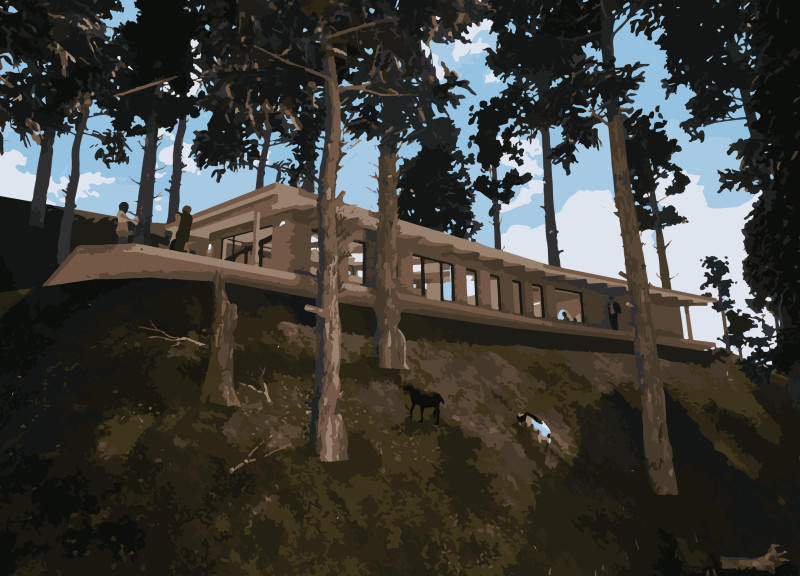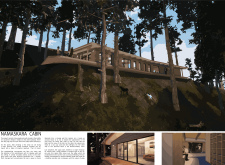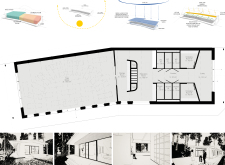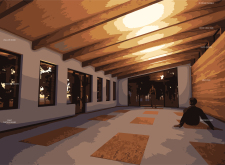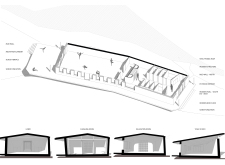5 key facts about this project
The Namaskara Cabin is designed as a peaceful retreat for yoga practitioners. Located at an elevated site, the cabin provides a distinct sense of arrival, allowing users to engage in wellness activities within a thoughtful environment. The concept focuses on creating a smooth transition into a space dedicated to mindfulness and reflection, encouraging users to leave behind the distractions of everyday life.
Architectural Layout
The cabin’s layout features two equal sections divided by a central axis, establishing a purposeful organization of spaces. As visitors approach, they ascend a few steps to reach a large opening that invites them into a reflective atmosphere. The Vestibule or Hall is designed to guide the flow of people, with sloping walls and a low ceiling that create an intimate setting. The configuration enhances focus and provides easy access to changing rooms and technical areas without causing interruptions.
Functional Design
Inside, practitioners are given choices that foster a sense of intention. A storage wall opposite the main entrance is dedicated to holding yoga mats and other items. This wall also serves to reduce noise, preventing disturbances from spreading to nearby spaces. Waiting areas are arranged on either side of the vestibule, offering two contrasting experiences: one side opens up to natural light and outdoor views, while the other features the subdued tones and textures of raw clay walls.
Yoga Room Dynamics
At the end of the cabin is the yoga room, which is notable for its large rectangular shape and sloped ceiling. This design allows natural light to fill the space, creating a connection with the surrounding landscape. Views of the valley enhance the environment. The design also protects against direct sunlight, preventing overheating and ensuring that the space remains comfortable during practice.
Materiality
The materials chosen for the Namaskara Cabin reflect the values of yoga and mindfulness. Earth and wood are the main materials used, emphasizing sustainability and a connection to nature. This choice supports a calming atmosphere that aligns with the goals of wellness and tranquility. The use of these organic materials enhances users' experiences, contributing to an inviting and warm environment.
The cabin’s thoughtful design combines space and atmosphere, offering a place where practitioners can engage deeply with their practice. The arrangement promotes a sense of peace, encouraging individuals to immerse themselves in their wellness journey.


